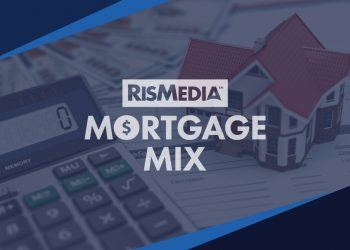 Markets in 54 out of the approximately 350 metro areas nationwide returned to or exceeded their last normal levels of economic and housing activity, according to the National Association of Home Builders/First American Leading Markets Index (LMI), released recently.
Markets in 54 out of the approximately 350 metro areas nationwide returned to or exceeded their last normal levels of economic and housing activity, according to the National Association of Home Builders/First American Leading Markets Index (LMI), released recently.
The index’s nationwide score of .86 indicates that, based on current permits, prices and employment data, the nationwide market is running at 86 percent of normal economic and housing activity.
The LMI figures for November showed that 55 housing markets were operating at or above their last normal levels and the nationwide market was operating at 85 percent of normal growth. LMI data for the two months were released simultaneously because of the delay in collecting data during the partial government shutdown in October.
“This index shows that most housing markets across the nation are continuing a slow, gradual climb back to normal levels,” said NAHB Chairman Rick Judson, a home builder from Charlotte, N.C. “Policymakers must guard against actions that could impede or even reverse the modest gains of the past year.”
Noting that smaller metros accounted for most of the 54 markets on the current LMI that are at or above normal levels, NAHB Chief Economist David Crowe said that “smaller markets are leading the way, particularly where energy is the primary economic driver. Nearly half of the markets in the top 54 are in the energy states of Texas, Louisiana, North Dakota, Wyoming and Montana.”
“The fact that more than 125 markets on this month’s LMI are showing activity levels of at least 90 percent of previous norms bodes well for a continuing housing recovery in 2014,” said Kurt Pfotenhauer, vice chairman of First American Title Insurance Co., which co-sponsors the LMI report.
Baton Rouge, La., tops the list of major metros on the LMI, with a score of 1.42 – or 42 percent better than its last normal market level. Other major metros at the top of the list include Honolulu, Oklahoma City, Austin and Houston, Texas, as well as Pittsburgh – all of whose LMI scores indicate that their market activity now exceeds previous norms.
Looking at smaller metros, both Odessa and Midland, Texas, boast LMI scores of 2.0 or better, meaning that their markets are now at double their strength prior to the recession. Also at the top of the list of smaller metros are Casper, Wyo.; Bismarck, N.D.; and Grand Forks, N.D., respectively.
The LMI shifts the focus from identifying markets that have recently begun to recover, which was the aim of a previous gauge known as the Improving Markets Index, to identifying those areas that are now approaching and exceeding their previous normal levels of economic and housing activity. More than 350 metro areas are scored by taking their average permit, price and employment levels for the past 12 months and dividing each by their annual average over the last period of normal growth. For single-family permits and home prices, 2000-2003 is used as the last normal period, and for employment, 2007 is the base comparison. The three components are then averaged to provide an overall score for each market; a national score is calculated based on national measures of the three metrics. An index value above one indicates that a market has advanced beyond its previous normal level of economic activity.
For historical information and charts, please go to nahb.org/lmi.










